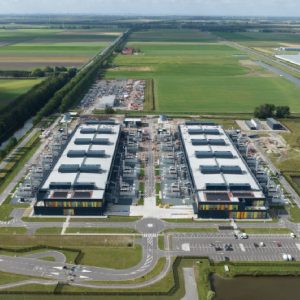
Digital Realty is the world’s largest owner, operator and developer of data centres with 131 properties located across over 30 markets throughout North America, Europe and Asia Pacific.
CBR spoke with the company’s VP of Global Solutions who said in the future the company will go through "expansion in the core markets (both organic and acquisitive) coupled with a focus on emergent and existing sector growth in new markets".
CBR: What are Digital Realty’s plans for the UK?
RB: Whilst North America is the predominant base, London is our single largest market by rental revenue assuming 11% of the worldwide portfolio. It is comprised of eight data centres within the broader metro area with over 1.3 million net rentable sq. ft., servicing a broad mix of customers from financial services, systems integrators, managed hosting, cloud service providers and telcos as the primary customers.
We have supported a significant uptake in the deployment of cloud service provider primary infrastructure sites, or the engine room of the cloud, within our data centres in London. These cloud service providers are building on our underpinning platform due to the enhanced performance, cost and operating efficiency they are able to avail of in these facilities.
CBR: How are the London sites connected?
RB: All of our buildings in London are connected with high capacity Dark fiber which are in turn directly connected into all key carrier hotels within the metro, effectively creating an extended metro campus play across those eight data centres and the strategic carrier hotels mentioned.
Enterprises in any one of those data centres are able to leverage the cloud service provider community, in support of interoperable and mobile workload to and between cloud service providers and their private cloud deployments.
CBR: What is the importance of a data centre?
RB: The data centre, together with the network, form the foundation layer on which the entirety of the digital economy is built.
The architecture of the data centre and the associated networks that underpin all compute and storage ought to be designed in such a way that if one production environment goes down (within a single facility) the result should not be service affecting.
Due to a distributed architecture, service is not lost, it is merely scaled back in accordance with what remaining mirrored resources are in place.
CBR: How are you looking at fresh cooling?
RB: By leveraging expansion in permissible internal data hall environmental ranges (observing evolving ASHRAE environmental guidelines) combined with the application of the latest cooling technologies we have been able to deploy solutions requiring no mechanical refrigeration of any kind.
The most notable examples of this deployment in our European portfolio is the application of indirect air cooling technology at our Profile Park campus in Dublin and our Crawley Campus in London (supporting a purpose built facility for Rackspace).This has resulted in significant OPEX savings for our customers, underpinned by design PUEs in the order of 1.15.
CBR: Are data centre strategies becoming more complex?
RB: It is becoming increasingly difficult for data centre operators to identify to prospective customers what the unique value is associated with their products and services.
This relies on an ability to provide value clarity to an offering but this is crucially dependent on an understanding of the underlying business drivers framing a technology solution. Data centre partners that bridge that gap between business problem/objective and solution offering are the ones that are going to succeed.
CBR: What is Digital Realty take on IoT and M2M?
RB: The key thing to recognise in the IoT and M2M space is "use case". Identification of the right use case is absolutely fundamental to adoption.
The building blocks and eco-system platforms remain materially immature at this point so understanding how the technology underpinning of IoT are integrated and costed is an equally key question.
Businesses then need to address the important question of operating margin and how they scale. The building blocks – analytics, data aggregation, data transport and the hardware elements (sensors, computing and storage) also need to be carefully selected.
At present we are seeing the bulk of the interest and spend in this space sitting within the manufacturing sector with utilities (principally energy) and insurance (telematics) following in second place. Healthcare, from a rather slow start, is also showing strong signs of growth.






